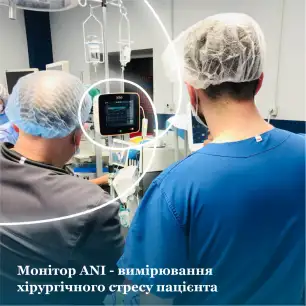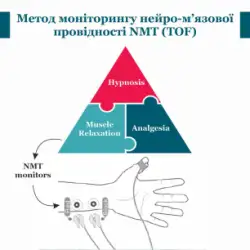Are intravenous solution warmers really so important in combat situations?
13 April 2022Hypothermia is one of the biggest "killers" of patients because it is quite easy to cause and difficult to correct. This is an axiom in the so-called "trauma anaesthesia"[1].
In addition to the usual intraoperative heat loss due to the mechanisms of radiation, convection, evaporation and conduction, during surgical interventions during the war on traumatised patients, all these mechanisms of heat loss occur during the evacuation of the patient to the hospital.
Most enzymes in the human body operate within certain temperature limits. Hypothermia disrupts the functioning of enzymes. Metabolic and physiological processes slow down. Cardiovascular effects include hypotension, bradycardia, and ventricular fibrillation in severe cases. The oxyhaemoglobin dissociation curve shifts to the left - haemoglobin is easier to attach oxygen, but harder to release it. There are at least three mechanisms of how hypothermia impairs protection against surgical wound infection [2]. Examples of pathophysiological shifts can be found in almost every system of the body.
But one of the most undesirable manifestations of hypothermia in patients intraoperatively is coagulopathy. This is primarily due to a reversible impairment of platelet aggregation as a result of reduced release of thromboxane A3, which impairs the formation of the initial platelet clot. Hypothermia also reduces the activity of enzymes in the coagulation cascade, which in turn reduces the formation of blood clots [3]. This all leads to greater perioperative blood loss and the need for blood transfusion. In one meta-analysis, even mild (e.g., 1°C) hypothermia increased blood loss by about 20 per cent [4].
Hypothermia-induced coagulopathy is often not diagnosed during routine laboratory tests because these tests are performed at 37°C and thus the coagulation profile may appear normal, although it would not be if corrected for temperature.
Another important manifestation of hypothermia is the effect on drug metabolism. For example, the duration of muscle relaxants (NMBAs) increases with hypothermia. There are studies that show that the effect of atracurium is prolonged by 60% in hypothermia [5]. This affects the duration of anaesthesia and recovery from anaesthesia, the risk of residual muscle relaxation in the absence of neuromuscular monitoring. And this is not a plus in combat conditions."
Thus, you need to understand that at the stage of evacuation, the patient may already be in a state of hypothermia. Our simplest actions in the operating room for such patients are as follows:
maximum, if possible, increase in air temperature in the operating room;
if possible, the use of devices for heating the body of patients;
heating of IV solutions.
It should also be understood that warming the solutions alone does not warm the patient, as intravenous fluids can only slightly exceed the internal (cow) temperature. Thus, warming the fluids does not compensate for the initial hypothermia due to redistribution from the peripheral tissues to the heart, nor for subsequent losses from the skin surface and surgical incisions. Similarly, warming the fluid for abdominal irrigation does not transfer significant amounts of heat to the patient. But patients can be significantly cooled by infusing unwarmed intravenous fluidor exposure to unwarmed abdominal lavage fluid. For example, each litre of fluid administered at ambient temperature reduces the average body temperature by 0.25°C in a 70 kg patient.
In the conditions of hostilities, the usual patient body heaters may not be available, and the temperature in operating theatres may be low.
Thus, the use of heaters for intravenous solutions is a simple method and at the same time can be one of the key elements to prevent further hypothermia in patients and negative consequences.



